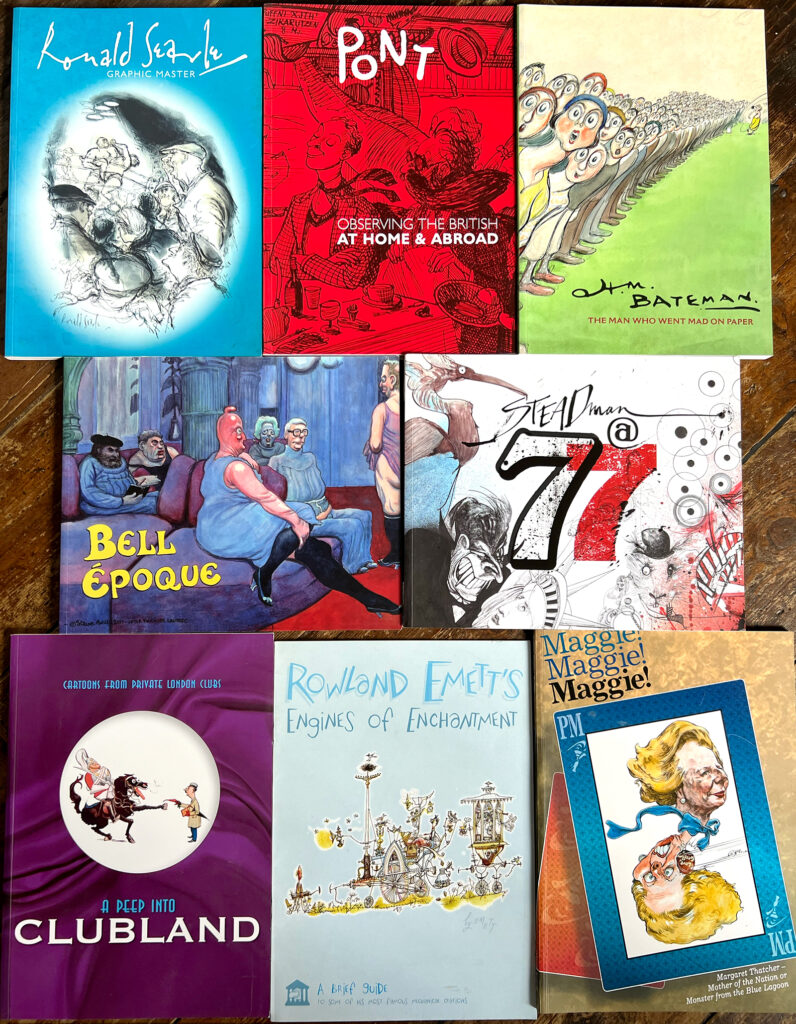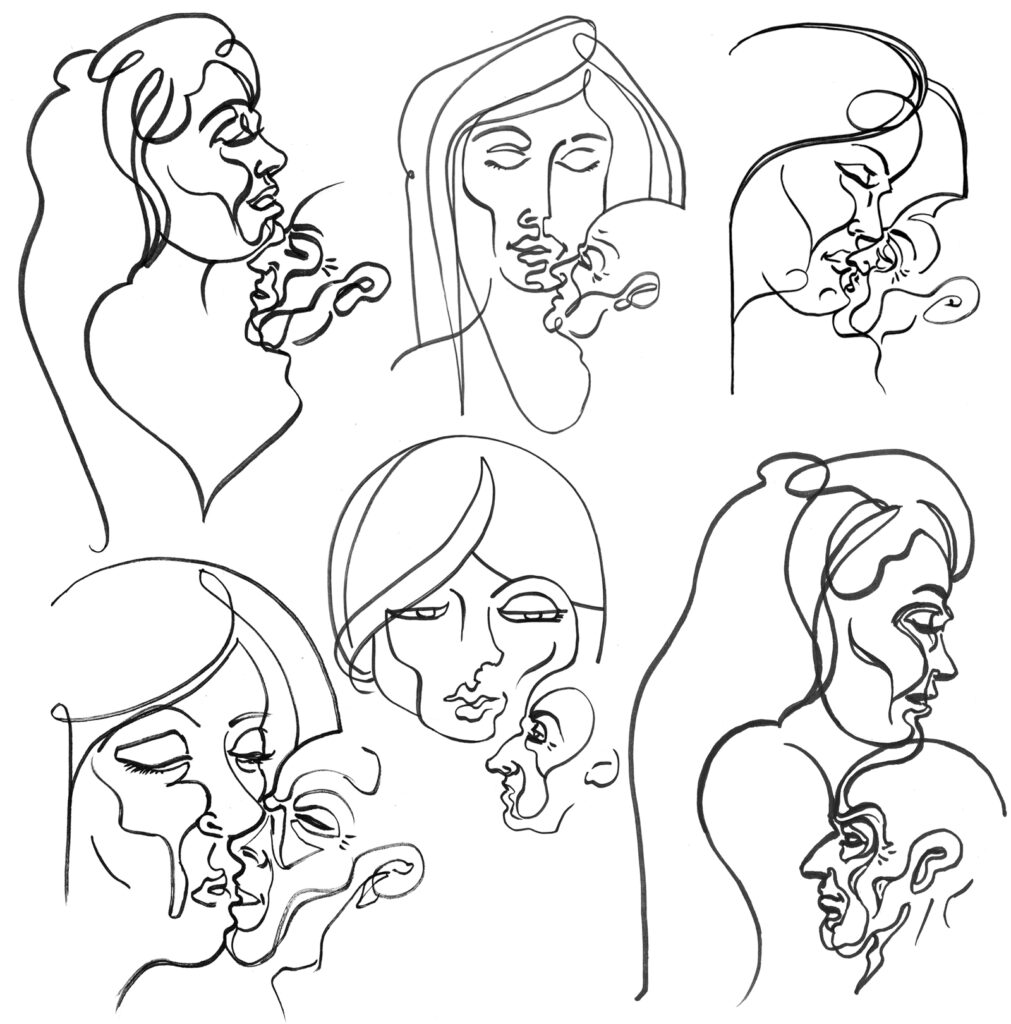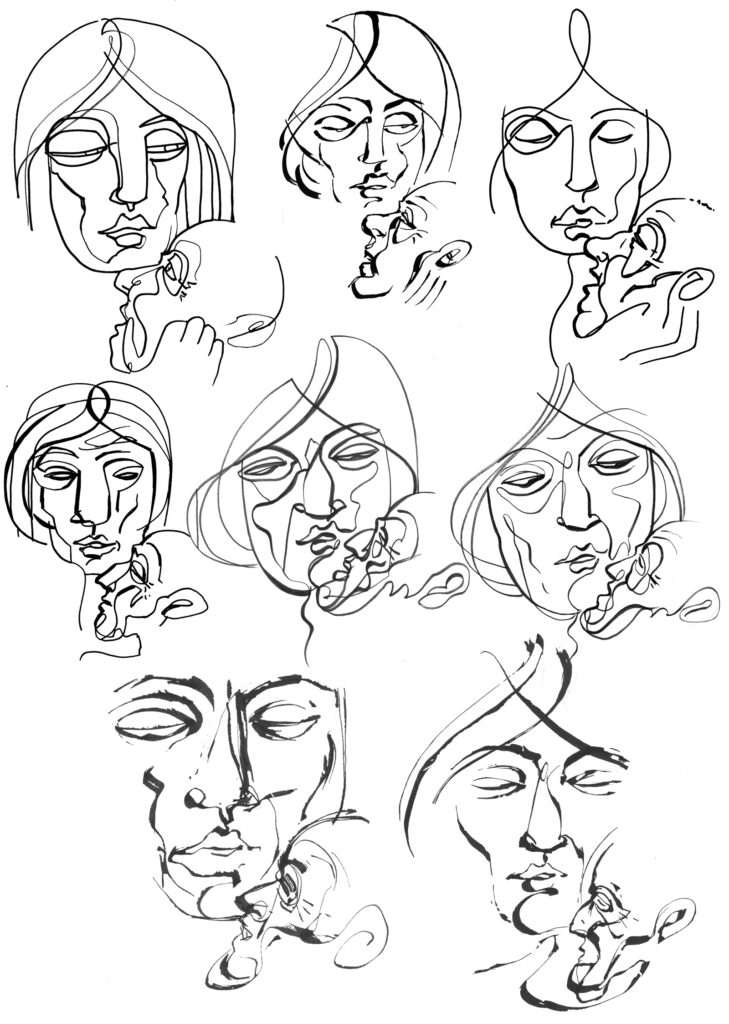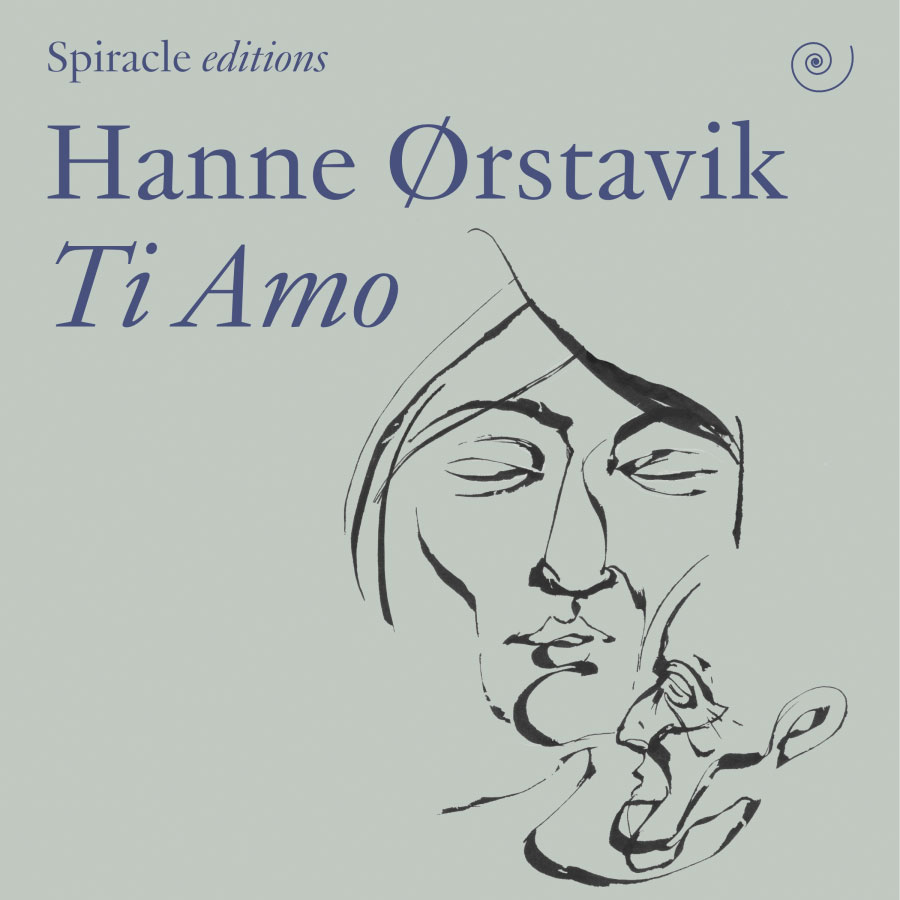Spiracle: a line took me for a walk
“Drawing is taking a line for a walk,” said Paul Klee, but there are many lines that run through our lives connecting places and people and events. We may only notice them when looking back over our shoulder, but every one of us can trace How We Got Here back through a thousand single steps.
The Cartoon Museum was a regular haunt for me until we left London. I volunteered there every week, meeting cartoonists I admired and visitors who shared my love of the form or were keen to learn something about it… and made some good friends. I designed their catalogues and books, all sorts of marketing bumpf and learned more than I thought possible.

After we’d been in Brighton a few years, train pain and other commitments combined to limit my involvement and when they relocated to their fine new premises at 63 Wells St, London W1A 3AE it seemed a good time to call it a day.
But the line continued on.
A short while ago the Museum’s Learning Coordinator, my favourite living cartoon, Steve Marchant mentioned a visitor who was looking for freelance illustrators.
Cutting a short story long, I contacted Spiracle and it turned out they were looking for cover art for a new line of audiobooks. They wanted the covers to sit somewhere between illustration and art… “we’re thinking simple and idiosyncratic… like Saul Steinberg and The Line”. A conversation that reminded me of the way Penguin used to treat their paperback covers.
Music to my ears!
So, with a short description of the book Ti Amo by Hanne Ørstavik (translated by Martin Aitken) and the idea of a line drawing that hints as much as it reveals, I took a variety of pens and a sketchbook off on a camping holiday with the family.
One curious thing for me in working with somebody for the first time, is which Me they will respond to.
I trust that most people can recognise that the same hand and mind were behind the pieces I make, but not choosing to use the same tools or visual language on every project always makes it hard for them to predict what they will get from me. This is, understandably, a barrier to many commercial jobs where the client has to know more or less what they are going to get.
Delightfully, Kate at Spiracle is one of those unicorn clients who want an artist to explore as they go and was happy to receive multiple pages of rough drawings with different pens and different approaches to ‘taking a line for a walk’. I quickly drew picture after picture and discarded most as not good enough or too obscure for this project before sending a set over for review.
Some of the first batch here [click for larger images] are closer to my natural drawing methods than others as I tried to get a handle on just how closely Spiracle wanted the one-line drawing approach followed. For the sake of the brief ~ an image that has to work at thumbnail size as well as on a cover ~ I kept to a variety of ink pens, brush pens and sharpies to keep it relatively clean. No sticks, mud or handprints this time…

Even as preliminary sketches, some of these were not really how I hoped to work, but you have to find out what the parameters you are operating in with a new client…
You can imagine my grin when the response was favourable to one of my two most preferred approaches (the sharpie bottom left).
We decided between us that it didn’t have to be drawn with one continuous line ~ that had been just a starting point as we developed our common language. So I went away and did some more finished variations using what I thought was the desired clean line [click for larger images].

Honestly, I felt a little uneasy about this set as they were more definite, concrete images than I’d started with,,, it’s an approach to drawing that I enjoy, but I have to keep reminding myself to be constrained by it and not follow my butterfly mind off on tangents.
Kate’s reaction was that these had lost a lot of the energy of the initial drawings (true) and that they felt a bit literal (too true). Let’s have another go, without feeling like I have to nail down the story moment so specifically… oh, yes… that’s my kind of prompt.
This final set started playing with clean lines in a decorative manner and finished with my more natural inky lines [click for larger images].

Yes! the last one there ticked the boxes for what Spiracle wanted and what I needed… a small edit to make the hair feel “less calligraphic” (and don’t we just love clients who can spell out their thoughts that clearly?) and we had a signed off illustration that I hope does the job for the client as well as fulfilling my drawing itches.

Ti Amo is a touching, deeply personal book by Norwegian author Hanne Ørstavik translated with great sensitivity by Martin Aitken, about the loss of her Italian husband to cancer. I think you’d enjoy reading it, but the audiobook may just be the perfect way to immerse yourself in this intimate story, so check the sample at Spiracle here.

I love you.
We say it to each other all the time. We say it instead of saying something else. What would that something else be?
You: I’m dying.
Us: Don’t leave me.
Me: I don’t know what to do.
Before: I don’t know what I’ll do without you. When you’re not here any more.
Now: I don’t know what to do with these days, all this time, in which death is the most conspicuous of all things.
I love you.
You say it in the night when you wake up in pain, or between dreams, and reach out for me. I say it to you when my hand finds your skull, which has become small and round in my palm now that your hair is almost gone, or when I stroke you gently to get you to turn over and stop snoring.
I love you.
footnote:
*There’s a lot of talk recently about the AI generated imagery and how it threatens the livelihoods of artists, illustrators, writers and Content Providers. It would be easy for these sorts of jobs to be lost to an in-house staffer uploading prompts to Midjourney or DALL.E but the line between the story, the client and the illustration would be broken… trial and error would definitely produce some cool pictures, but without that human conversation about why one nuance is moving in the right direction while another is getting colder you’d lose something, not least a consistence of thought on any follow-up projects.
My own practice of working with accidents and found imagery and the randomness of tools can feel akin to the AI algorithms’ method of combining random pixels and referencing them with a library of images they are trained to recognise as pictures.
But my work has a human eye and mind and heart making the connections… joining the line back through all the influences and allusions that got me to here, making this image. That line connects so many other human hearts and minds that any drawing we make this way is deeper and wider than the marks on the page.
There are always beautiful and terrible images appearing at random in front of human eyes ~ sunsets behind clouds, faces in trees, Elvis on your toast. But they only have value when a human mind engages with them. When a human heart continues the line.
AI could turn out to be a wonderful tool for connecting the dots along some of our lines… for now at least, it is not part of the line.



